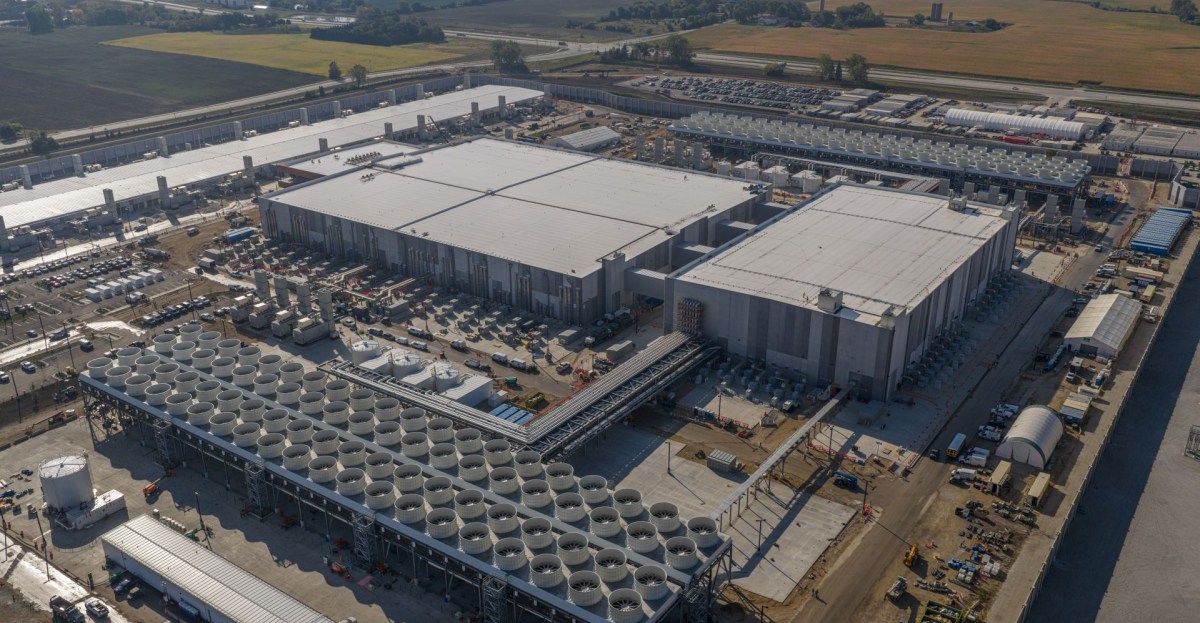
Gridcare thinks more than 100 GW of data center capacity is hiding in the grid
Sources: https://techcrunch.com/2025/05/27/gridcare-thinks-more-than-100-gw-of-data-center-capacity-is-hiding-in-the-grid, techcrunch.com
TL;DR
- Gridcare believes there is more than 100 GW of data-center capacity hiding in the electrical grid.
- The company maps the grid, uses generative AI to forecast near-term changes, and layers in data such as fiber optics, natural gas, water, weather, permitting, and community sentiment to identify where capacity can unlock.
- It recently closed an oversubscribed seed round of $13.5 million led by Xora, with participation from Temasek’s deep tech venture firm and other investors.
- Gridcare’s model centers on matchmaking: data-center developers and hyperscalers are connected with utilities to verify data and access newfound capacity.
- Utilities have approached Gridcare about auctioning access to capacity, signaling broad industry interest. Gridcare founder Amit Narayan believes the approach could unlock more than 100 GW of capacity. Source Note: The article includes an update clarifying the capacity figure as gigawatts rather than megawatts.
Context and background
Hyperscalers and data center developers want to rapidly add computing power, but utilities commonly impose long waits for grid connections. Narayan notes that many AI data centers struggle to get connected and that some turns to behind-the-meter power sources—a costly approach that underscores the urgency in securing electricity. Narayan has spent 15 years studying the grid, first as a Stanford researcher and then as a founder, asking, “How do we create more capacity when everyone thinks that there is no capacity on the grid?” The company has been operating in stealth while exploring untapped capacity. Gridcare has already identified multiple locations where extra capacity exists and positions itself as a matchmaker between data centers and utilities. The founder argues that this approach can unlock capacity without relying on nuclear fusion or other exotic solutions. The team has mapped the grid and used generative AI to forecast likely changes over the coming years. They also layer in other factors, including the availability of fiber optic connections, natural gas, water, extreme weather, permitting, and community sentiment around data center construction and expansion. Narayan notes that evaluating potential sites involves simultaneously considering more than 200,000 scenarios and aligning findings with federal guidelines governing grid usage. The next step is direct engagement with the relevant utility to verify the data. The matchmaking process then connects data-center developers with utilities, aligning what developers are willing to do with where they can operate. Gridcare charges a fee based on how many megawatts of capacity they unlock for a given project. While the fee may be significant for Gridcare, it is often negligible compared with the scale of a data-center project. Depending on the path to unlock capacity, some developers might forgo grid power for periods of time and rely on on-site backup power, while others could see a near-term path that enables a nearby grid-scale battery installation. In addition to working with developers, utilities have approached Gridcare about auctioning access to newly liberated capacity, suggesting the market’s interest in a transparent allocation mechanism. Narayan contends that the company’s method could unlock more than 100 GW of capacity, providing a new, data-driven route to expanding compute power without waiting for traditional grid upgrades.
What’s new
The company’s emergence is anchored in its seed funding and in the operational model it has developed. Gridcare closed an oversubscribed seed round of $13.5 million, led by Xora, Temasek’s deep tech venture firm, with participation from Acclimate Ventures, Aina Climate AI Ventures, Breakthrough Energy Discovery, Clearvision, Clocktower Ventures, Overture Ventures, Sherpalo Ventures, and WovenEarth. The round underscores investor confidence in a data-driven approach to uncover hidden grid capacity and in the potential to streamline access for hyperscalers and data-center developers. TechCrunch Gridcare’s method begins with a comprehensive map of the existing grid, followed by the application of generative AI to forecast changes over the next several years. The company layers in operational details such as fiber optic connectivity, gas and water availability, exposure to extreme weather, permitting trajectories, and community sentiment around new or expanded data-center projects. The approach accounts for more than 200,000 scenarios to identify where “maximum bang for the buck” can be achieved while staying within regulatory boundaries. Once a promising site is identified, Gridcare engages with the relevant utility to verify the data and feasibility. On the commercial side, Gridcare markets to data-center developers by quantifying the amount of capacity that could be unlocked and the relative timeline. The firm’s fee structure is tied to the megawatts of capacity that become accessible for a project, aligning incentives for efficiency and speed. In some cases, developers might opt for intermittent grid power in favor of leveraging on-site generation or backup arrangements, whereas in other cases the unlock could pave the way for new grid-scale energy storage installations nearby. Utilities have already approached Gridcare about auctioning access to the newly discovered capacity, indicating that the model could translate into real, tradable grid capacity rather than purely consulting outputs. Narayan’s view is that Gridcare’s strategy can unlock substantial capacity without waiting for incremental grid buildouts. While the precise amount remains a forecast, he asserts the potential to unlock more than 100 GW of capacity by identifying and activating latent grid assets. The team maintains that this approach is complementary to existing grid infrastructure, enabling faster access for data centers while maintaining regulatory compliance.
Why it matters (impact for developers/enterprises)
For hyperscalers and data-center developers, Gridcare’s approach could shorten the time to grid connection and reduce the dependency on on-site embedded generation as a shortcut. By revealing underutilized portions of the grid and presenting verifiable data to utilities, Gridcare aims to reduce the friction associated with expanding compute capacity. The potential to unlock hundreds of gigawatts means faster deployment of AI and cloud workloads without simply building out on-site power infrastructure or waiting years for traditional grid upgrades. The emphasis on data-backed site selection could also encourage smarter siting of future data centers, with utilities gaining visibility into where to target capacity investments. TechCrunch
Technical details or Implementation
Gridcare’s workflow combines grid mapping, data layering, and AI-driven forecasting to identify unlockable capacity. A high-level overview:
- Mapping the grid: Establishes a baseline of existing capacity and where latent capacity could exist.
- Forecasting with generative AI: Projects changes in the grid over coming years to anticipate opportunities and constraints.
- Data layering: Adds factors such as fiber connectivity, natural gas, water, weather risk, permitting timelines, and community sentiment.
- Scenario analysis: Evaluates more than 200,000 possibilities to find where capacity can be unlocked most effectively within regulatory limits.
- Validation with utilities: Data is presented to the relevant utility to verify feasibility and access rights.
- Matchmaking: Gridcare engages with hyperscalers and data-center developers to coordinate expansion plans with utility-confirmed capacity.
- Revenue model: Fees charged to developers based on the megawatts unlocked, with the possibility of path-to-market options that involve different grid-use strategies.
Key elements in practice
| Aspect | Description |
|---|---|
| Core approach | Grid mapping + generative AI forecasting + regulatory alignment to identify unlockable capacity |
| Data inputs | Grid topology, fiber optics, natural gas, water, weather, permitting, community sentiment |
| Validation | Utility verification and adherence to federal guidelines on grid usage |
| Engagement model | Matchmaking between data-center developers and utilities |
| Commercial model | Fee based on megawatts unlocked; optional approaches may vary for each project |
Notes on scalability and timing
- Utilities have already approached Gridcare about auctioning access to newfound capacity, suggesting a path to market that goes beyond advisory services.
- Narayan emphasizes that the model does not require solving speculative technologies and could unlock capacity with existing grid assets.
- The estimated potential is large, with Narayan citing more than 100 GW as a reachable outcome under the company’s framework.
Key takeaways
- Gridcare targets a substantial, underutilized portion of the electrical grid to unlock data-center capacity.
- The company combines grid mapping, AI-based forecasting, and multi-factor data layering to identify viable capacity sites.
- A seed round of $13.5 million was oversubscribed, led by Xora, with participation from Temasek’s deep tech fund and other investors.
- Utilities are engaging with Gridcare on access arrangements, including auction formats, highlighting industry interest.
- The model aims to accelerate data-center expansion by aligning developer timelines with verifiable grid capacity rather than relying solely on traditional grid upgrades.
FAQ
-
How does Gridcare identify untapped capacity?
The company maps the existing grid, applies generative AI to forecast near-term changes, and layers in data such as fiber, gas, water, weather, permitting, and community sentiment, then validates findings against federal guidelines and utility input.
-
What is the scale of capacity Gridcare believes could be unlocked?
The founder estimates more than 100 GW of capacity could be unlocked using the approach. Update: the article notes the figure in gigawatts rather than megawatts.
-
Who invested in the seed round, and how much was raised?
Gridcare closed an oversubscribed seed round of $13.5 million led by Xora, with Temasek’s deep tech venture firm and participation from Acclimate Ventures, Aina Climate AI Ventures, Breakthrough Energy Discovery, Clearvision, Clocktower Ventures, Overture Ventures, Sherpalo Ventures, and WovenEarth. [TechCrunch](https://techcrunch.com/2025/05/27/gridcare-thinks-more-than-100-gw-of-data-center-capacity-is-hiding-in-the-grid)
-
How does Gridcare charge for its services?
The company charges data-center developers a fee based on how many megawatts of capacity it unlocks for a project.
References
More news
Microsoft to turn Foxconn site into Fairwater AI data center, touted as world's most powerful
Microsoft unveils plans for a 1.2 million-square-foot Fairwater AI data center in Wisconsin, housing hundreds of thousands of Nvidia GB200 GPUs. The project promises unprecedented AI training power with a closed-loop cooling system and a cost of $3.3 billion.
Meta 2025 Sustainability Report: Decarbonization, Water Stewardship and Biodiversity Initiatives
Meta’s 2025 Sustainability Report outlines decarbonization targets, water restoration in stressed regions, biodiversity efforts, supplier engagements, and data-center innovations, including mass timber pilots and nuclear energy pilots.
Breaking the Networking Wall in AI Infrastructure
Microsoft Research outlines MOSAIC, a microLED-based optical interconnect concept designed to overcome datacenter memory and network limits restricting AI performance, with potential to transform AI cluster designs.
How one AI startup helps rice farmers battle climate change
Mitti Labs uses AI to measure methane emissions from flooded rice paddies and partners with The Nature Conservancy to expand regenerative, no-burn farming in India, while tracking carbon credits to support farmers.
Meta to add 100MW of solar power from US gear to back SC AI data center
Meta signs a $100 million, 100 MW solar farm deal with Silicon Ranch in South Carolina to power a planned AI data center, with most equipment made in the U.S. Operations expected in 2027.
Harvard dropouts unveil 'always-on' AI smart glasses that listen, record, and transcribe every conversation
Two former Harvard students claim to be building Halo X, discreet smart glasses with an always-on microphone, real-time transcription, and AI-driven prompts — raising questions about privacy, security, and legality.





